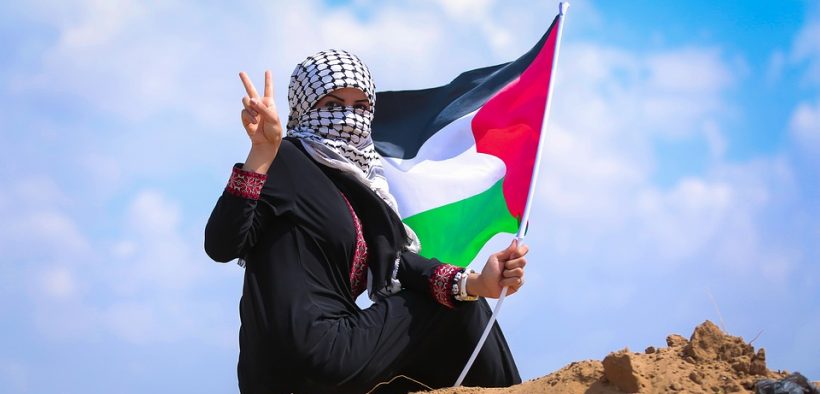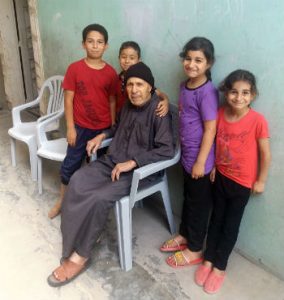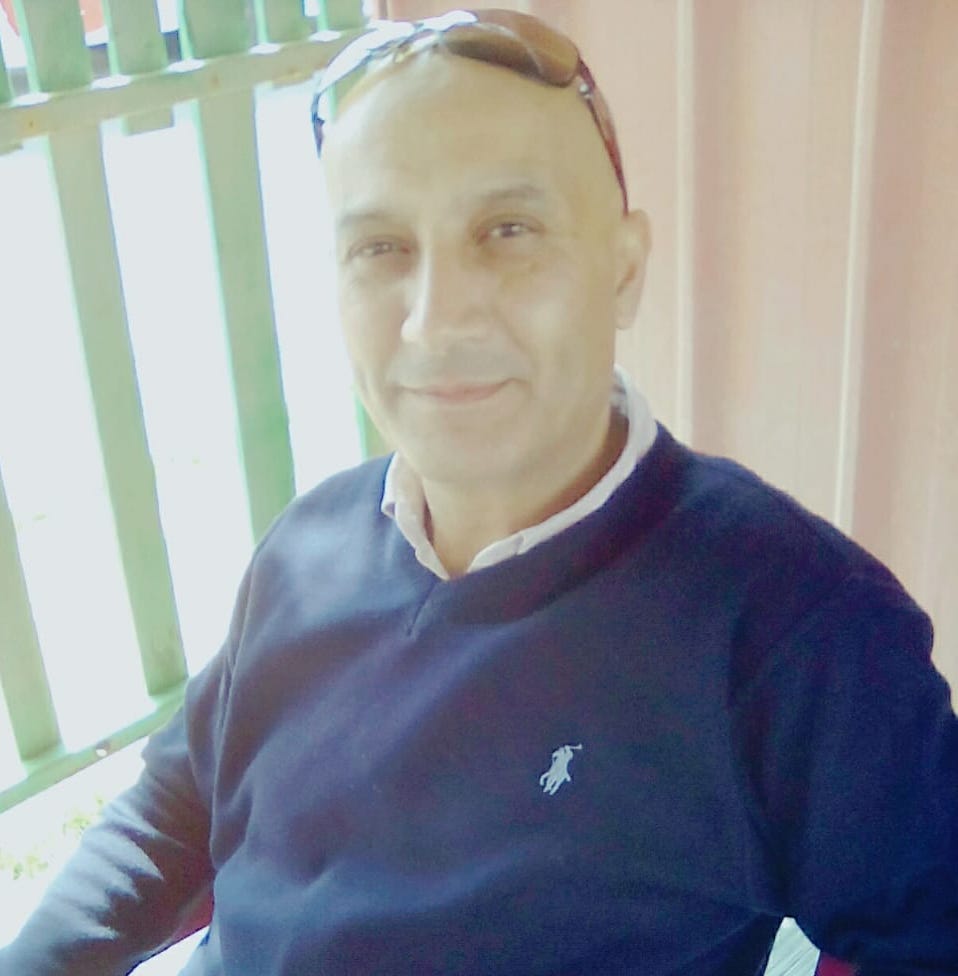On 71st Anniversary of Nakba, Palestinians Dream of Returning Home

On May 15 of every year, Palestinians commemorate the day roughly half of all pre-war Palestinian Arabs were expelled from their homes during the 1948 Arab-Israel War.
In the Gaza Strip, elderly Palestinians who were displaced during the Arab-Israel War of 1948, known as the Palestinian people’s Nakba – or “catastrophe”- a remarkable event in Palestinian history, still dream of returning to their hometowns, back in what was once Palestine.
Back in May of 1948, as the state of Israel was created, 700,000 Palestinian villagers fled or were expelled from over 450 Palestinian villages and towns as a result of the Arab-Israel War.
The war erupted shortly after the British “mandate” over Palestine ended. Displaced Palestinians fled to the nearby Gaza Strip, West Bank, Jordan, Lebanon and Syria.
Arabs Blamed for the Nakba
Yousef Mohammad Albahnasawi, an 87-year-old Palestinian refugee living in Nuseirat, a refugee camp in the central Gaza Strip, looks healthy for a man who has lived through what he has been through. He now has more than 80 family members including children and grandchildren.

Yousef Albahnasawi and his grandchildren at his Nueirat family home. (Photo: Rami Almeghari)
“At night, almost at 3 o’clock in the morning, Israeli troops began shooting at the nearby Basheet village,” he told Citizen Truth and some of his grandchildren who had gathered to hear the story. “Someone called Yousef Bahnasawi, a cousin of mine, Mohammad Aldewi, Saleh Alhems, and two others were shot dead during the shootout, just before we were forced out of my Yebna village.”
“Sadly, the cause of our Nakba was the weak Arab armies, which came over to fight back the Israeli troops and defend our homeland,” he continued. “After the Arab armies failed to fight the Israelis back, we moved to Isdod [now Ashdod], and stayed almost a month over there, before we were forced out completely from Palestine. By then, the Israeli troops were advancing.” Yousef’s voice began to tremble at the recollection and the anger.
Life Back in Yebna
Yousef was born in the village of Yebna. “Over there, we had a school, a mosque and my family-owned farmland. Grapes were one of my father’s crops, which some residents from the now West Bank city of Hebron, used to buy,” he recalled.
He completed primary school there. “The most important crop was citrus fruit, mainly oranges. I did some work in collecting and packing oranges and I remember very well that we had our own Palestinian currency, mainly the Palestinian pound. But money was not available that much, by then.”
Yousef remembered wedding parties in his old village. “During those times, wedding parties took from three days up to a week, where about 40 local men line up to sing and clap – called ‘Dihaya’. Also, the mother or aunt of a bridegroom used to dance while holding a sword. They were such nice moments that we miss these days.”
Sports in Yebna
Back in Yebna, Yousef loved to go to the local football matches. “Some football teams from the nearby Qatra village and others used to hold tournaments right on Yebna’s playground. I myself only attended, but did not take part in them,” the elderly Palestinian refugee smiled.
With one more cheerful smile, the Nakba survivor recalled traveling across Palestine.
On the 71st anniversary of the Nakba, Yousef Albahnasawi still hopes to return to his village. “Even if they give me all the money of the world in compensation for my Yebna home and farmland, I would never accept,” he told Citizen Truth.
“I will only accept returning back to the village and leaving this refugee camp. Also, I am recommending to my sons and grandchildren [that they do] not to bargain their right of return, at any rate,” he said.
Before 1948
Ahmad Alhour (Abu Talal), was 25 years old when he and his entire family were expelled by force from the Palestinian village of Almoghar. He also now lives in the Nuseirat refugee camp in the central Gaza Strip.
Abu Talal has an extended family almost 90 strong, including sons, daughters and many grandchildren. At his Nusierat home, Abu Talal has a map of his Almoghar village, just about 40 kilometers (about 25 miles) from the Gaza Strip.
“I was the youngest of four brothers. I used to escort my father to our farmland where he grew various vegetables, but I did not work in farming,” he told Citizen Truth.
“During my youth, I used to go to the coastal city of Jaffa. By then, I was newly married and my wife and I watched a movie at the Hamra Cinema of Jaffa,” he said.
Carpentry and Bread-Making in Yebna
When the family was displaced, Abu Talal had a six-month-old daughter and was working in a carpentry workshop that was part of a military airport belonging to the British mandate authorities.
“The British principals at the airport dealt with us very well and they ran special vans for the local staff workers, taking them back and forth to the airport on a daily basis. I worked over there for five years,” Abu Talal recalled.
Back in Almoghar, Abu Talal’s family used to own a large area of farmland, where the family cultivated barley and wheat, as well as garlic. “My father owned some cows and livestock, and my mother had an oven made of mud, which she used to make some bread and cooking,” he remembered.
Local families used to feud among each other from time to time, but all their feuds were resolved swiftly and peacefully by a trusted arbitrator.
“Once, two families quarreled and were about to reach a flashpoint. By then, a community-based reconciliation chief, belonging to my Alhour family, imposed a solution on the two families and they accepted with no objection. Our life back in Almoghar was very peaceful; we only learned what violence meant when the Israeli troops began expelling us by force. This violence by Israel remains experienced by one Palestinian generation to another, since 1948.”
The Moment of Expulsion
In May of 1948, Abu Talal and his family were forced to flee Almoghar for two nearby villages. “In May, under the heat, we reached a nearby area and one of the inhabitants offered us some food and a sleep at his home. Afterwards, we moved to Almasmiya village and stayed about five months, until Masmiya itself fell in the hands of Israeli Zionist troops,” Abu Talal told Citizen Truth
“This map of Almoghar is here at my home in order to remind all members of my family that they have a homeland, called Palestine… Whatever the Israelis do to wipe out memories, we will one day return,” he said.
As of today, 94-year-old Abu Talal still strongly believes in his right to return to his home village of Almoghar.
For over a year now, crowds of Palestinians in Gaza have been staging large-scale protests, right near the Israeli border fence.
As economic conditions worsen in Gaza, and the peace process between Palestinians and Israelis remains deadlocked – with the United States moving its embassy from Tel-Aviv to occupied East Jerusalem, Palestinians insist on their right to return and reference U.N. General Assembly resolution 194 of 1949.
Article 11 of the resolution stated:
(The General Assembly) Resolves that the refugees wishing to return to their homes and live at peace with their neighbours should be permitted to do so at the earliest practicable date, and that compensation should be paid for the property of those choosing not to return and for loss of or damage to property which, under principles of international law or in equity, should be made good by the Governments or authorities responsible.
According to United Nations records, Palestinians number more than two million in Gaza, a part of nearly five million Palestinian refugees registered by United Nations Relief and Works Agency for Palestine Refugees worldwide.
“Though I do not belong to the Nakba generation, I would say strongly that I will never give up my right of return to the village of my ancestors, Almoghar,” said Abu Talal’s 54-year-old son while sitting beneath the historic map of Palestine. “I will also tell my sons and daughters not to concede such an inalienable right.”















